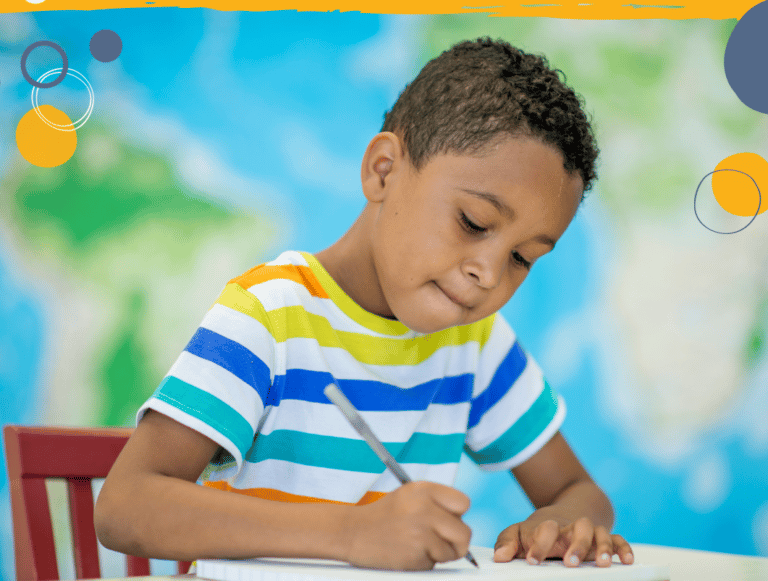How to turbo charge children’s creative writing
Guest post by Clare Lloyd
Children are natural storytellers. Inventing new worlds inhabited by imaginary characters is a lot of fun and brings plenty of playful pleasure to children.
By nurturing children’s individual voice through the medium of creative writing, we increase their self-belief and confidence whilst also fostering a love of learning.
Like a lot of creative processes, the right sort of inspiration and plenty of encouragement can have an enormous impact on your child’s motivation, desire and, indeed, willingness to write.
Here are my top tips to help jump start your child’s creativity so they write freely, with their heart and mind – get ready to watch their imagination soar!
Ignite their imagination
An exciting image, unusual object or film clip can give children the juicy inspiration they need to get their mind whirring with ideas. Allowing some space for your child’s creativity to breathe is a subtle but highly valuable part of the writing process. This can be achieved easily by giving your child space to think clearly and reflect, either indoors or outdoors!
Retell stories
Retelling stories is often the perfect place to start for reluctant writers. Shy, reserved children in particular who tend to be risk-avoidant for fear of criticism can also benefit from this gentle approach. Through retelling, your child will soak up the narrative elements of a story, including story structure, plot and character development.
They key is to find an inspiring clip or image to spark your child’s curiosity. Children love to use bits of their favourite books in their own stories, which is a positive thing as they learn to develop their own voice. To encourage some innovation, ask your child to add their own twist, what can they add to make the idea even better? Or check out the website Literacy Shed for lots of free video clips to inspire your child’s imagination.
Journalling
Keeping a journal is a cool thing to do! In fact, many children relish the idea of keeping a secret diary – the perfect place to express their thoughts away from the prying eyes of grown-ups. Journalling is a safe way for children to process their thoughts and feelings privately whilst channelling their creativity. They can be used brilliantly for doodling, jotting down snippets of amusing conversation and even creating hair dos for story characters. Look out for super exciting journals that come with an invisible ink pen and UV torch, they’d make a fun birthday gift for your child.
Praise effort
Genuine praise is undoubtedly one of the most powerful tools you can use to encourage your child to keep writing. Good feedback can enlighten, inspire and help focus the mind.
Whilst we know that effort doesn’t automatically bring success, it’s crucial that young writers learn the value of effort as a means to help them grow their writing skills and knowledge. It’s through effort that they learn how to shape their story characters and develop exciting plotlines.
By overemphasising performance, the finished piece, rather than effort and persistence, we run the risk of signalling to children that their writing is either good or poor. Whereas praising your child’s perseverance will help spur them on to learn the value in improving their writing.
Try to give descriptive and specific praise so your child has a clear idea of what it is they’ve done well. Eg:
- Great use of (!) to create a sense of excitement
- A super choice of adjective to describe the weather
- A thoughtful and descriptive story opening
- A great alternative for ‘said’
Embrace technology
If your child is fascinated by modern technology, it makes sense to use it to enhance their writing. Perhaps they’d like to use a free, online board or a Word processor to write (and print) their story or a poem? Being able to review and edit their spelling quickly and easily is a huge plus. Using a Word processor can also remove the pressure of handwriting. This is especially helpful for those who are self-conscious about their writing, allowing them to focus on all the amazing things they want to say instead.
Normalise mistakes
Creative writing is a multi-layered process so making mistakes is a natural part of that journey. Let your child know that creativity is all about having fun experimenting with ideas, some will work, others won’t and that is fine. When your child feels comfortable to invent without the pressure of being judged and closely monitored, they’re more likely to learn more and naturally progress. Spellings for common words can be acknowledged gently, so corrections can be made and whilst errors may not look pretty, editing work is a smart and valuable part of learning to write like a demon!
Get Creative
Hands-on activities that allow your child to explore their unique creativity can be brilliant for their imaginative writing. Your child may like to make their own pop-up book or poetry box. Lots of ideas like these can be found in a brilliant book titled Making Books by Paul Johnson (*affiliate link).
Using playdoh to create characters is a playful way to bring your child’s imagination alive. Shaping characters out of playdoh with friends is another really fun way to encourage some dazzling dialogue for a story.
Finally, remember that creative writing is a craft that takes time to master. However, by giving your child encouragement and the space to indulge their imagination you’ll start to notice a real difference in their creative confidence and story writing skills. You’ll be amazed!
This is a guest post by Clare Lloyd, founder of Creative Hare. Clare is a farmer’s daughter from Devon and a former Primary School Teacher with a passion for nurturing individual voice through creative writing. She is particularly interested in the impact of mindset on achievement.







